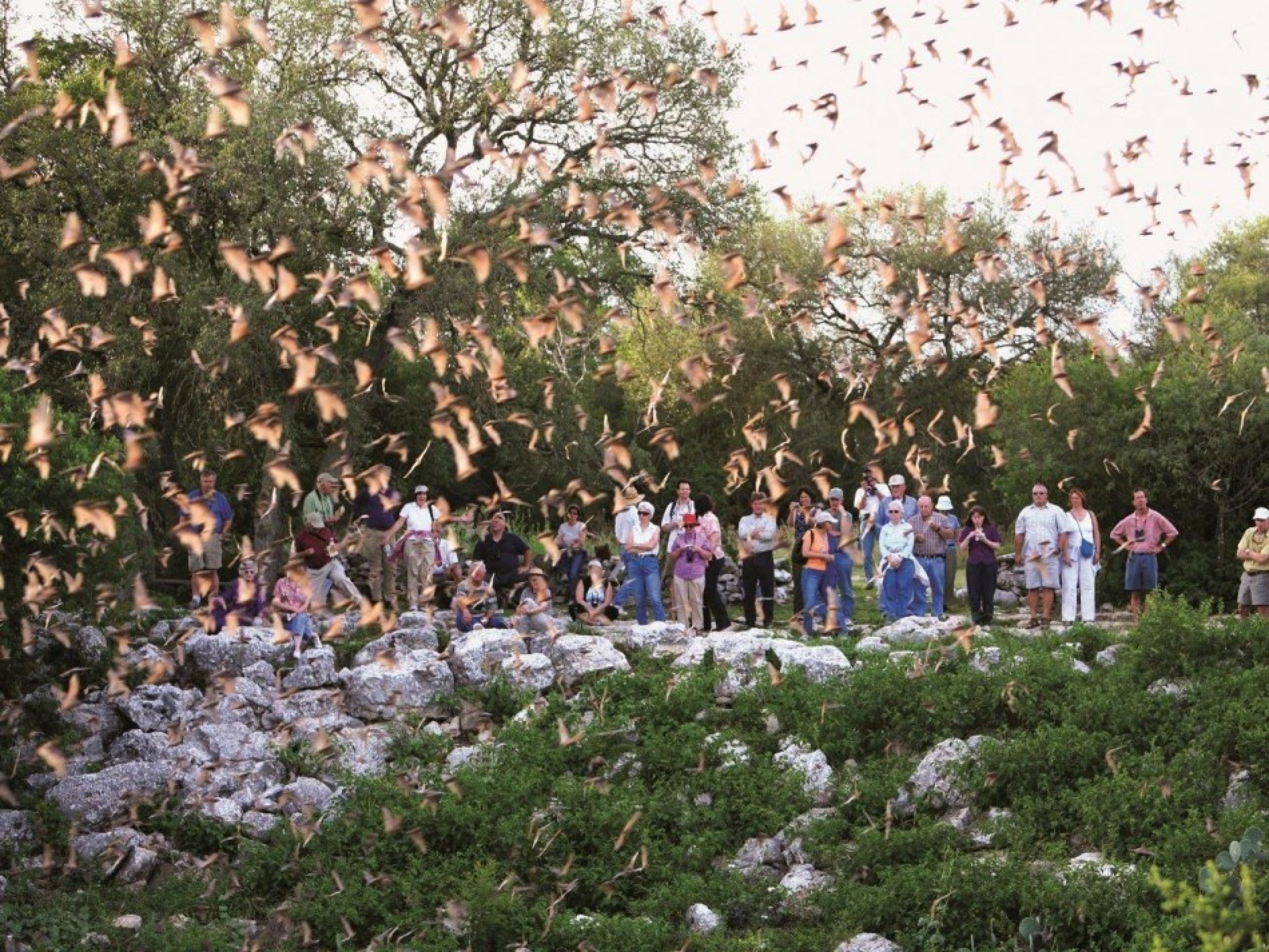Bracken Cave In Texas: World's Largest Bat Colony Opened For Public [PHOTOS]
Bracken Cave, the world's largest known colony of Mexican free-tailed bats, southeast of New Braunfels, Texas, has been opened for tourists to let them see these bats arising from its natural cave roost for their nightly hunt of pests.
Bracken Bat Flight tour of the cave was started in April 2012, the International Year of the Bat, to raise awareness about the importance of the earth's only flying mammals in ecosystem, according to Bat Conservation International (BCI), the Austin-based group which owns and manages Bracken Cave site.
The Bracken Bat Flight tours feature guided viewings several times a week, April through October. The tour begins at Natural Bridge Caverns with an educational briefing on bat species, behavior, and habitats prior to the flight viewing.
Negative myths and misinformation have generated needless fears that have threatened bats and their habitats for centuries. Our goal in opening tours to the public is to teach more people the truth about bats and the critical need for conservation efforts, Nina Fascione, Executive Director of BCI, said in a statement Thursday.
The Mexican free-tailed bats stream out of the Bracken Cave at dusk for their nightly insect hunt during summers in hundreds of thousands numbers forming a black cloud so large that it shows up on local weather radar.
The bats eat bugs, pollinate plants, and spread seeds.
The Bracken colony consumes tons of insects each night and plays an important role in pest control, helping farmers control moths, beetles and insects that destroy corn, cotton and other crops, BCI said.
The Bracken site has had a significant role in Texas and US history. The cave was mined in the 1860s for guano (bat droppings) to manufacture black gunpowder, during the Civil War. The guano was later used as a rich fertilizer for croplands across the United States.
Texas houses the largest urban bat colony in the world living below a bridge in Austin.
Have a glimpse of the Bracken Cave below.







© Copyright IBTimes 2024. All rights reserved.











